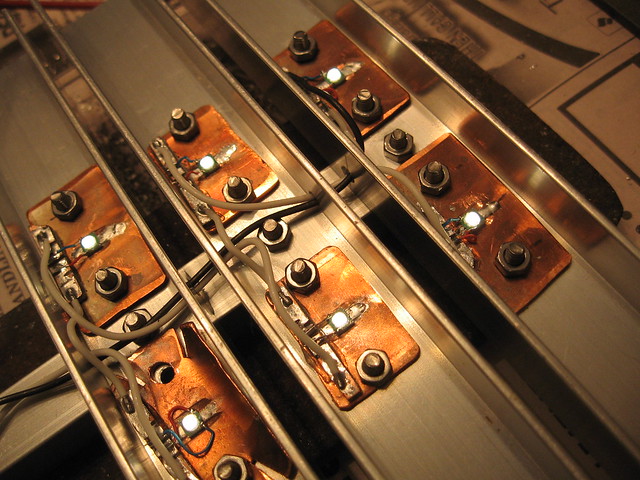Led Power Supply?
*I am going mad over trying to figure out what power supply I need. I am making an arduino controlled aquarium fixture and plan on using 30x3w leds. From what I understand using resistors could cause fire and I don't want that of course. I like the look of laptop drivers like this one*http://www.gapsupply.com/LED-Power-Supply-p/12v-dc-nwp-96w.htm*but I cant figure out which one I need. I have seen all the instructables for this and everyone seems to tape 8 meanwell drivers together. I dont want a big bulky ugly mess like that just one power supply to do the job. The smaller and more compact the better. I will be running 2 rows of white on the outside and one row of red in the middle. 10x3w leds per row. each row individually dimmable via ir and tft. here is the led specs.
Whites:*http://www.ebay.com/itm/390908787444?_trksid=p2059210.m2749.l2649&ssPageName=STRK:MEBIDX:IT
Forward Voltage: 3.2-3.8V-700MA
Luminous flux: 200-230LM
Output power: 3w
Light Color:* White 6000-6500K
View angle: 120-140
LED support:Copper
Life time:50000 hours
Reds:*http://www.ebay.com/itm/31083461629...49&var=610229587957&ssPageName=STRK:MEBIDX:IT
DC Forward Voltage:2.2V~2.8V
Forward Current: 600-700mA
Output power: 3w
Light Color:* White 6000-6500K
View angle: 120-140
Any help and ideas is greatly appreciated. Thanks
*I am going mad over trying to figure out what power supply I need. I am making an arduino controlled aquarium fixture and plan on using 30x3w leds. From what I understand using resistors could cause fire and I don't want that of course. I like the look of laptop drivers like this one*http://www.gapsupply.com/LED-Power-Supply-p/12v-dc-nwp-96w.htm*but I cant figure out which one I need. I have seen all the instructables for this and everyone seems to tape 8 meanwell drivers together. I dont want a big bulky ugly mess like that just one power supply to do the job. The smaller and more compact the better. I will be running 2 rows of white on the outside and one row of red in the middle. 10x3w leds per row. each row individually dimmable via ir and tft. here is the led specs.
Whites:*http://www.ebay.com/itm/390908787444?_trksid=p2059210.m2749.l2649&ssPageName=STRK:MEBIDX:IT
Forward Voltage: 3.2-3.8V-700MA
Luminous flux: 200-230LM
Output power: 3w
Light Color:* White 6000-6500K
View angle: 120-140
LED support:Copper
Life time:50000 hours
Reds:*http://www.ebay.com/itm/31083461629...49&var=610229587957&ssPageName=STRK:MEBIDX:IT
DC Forward Voltage:2.2V~2.8V
Forward Current: 600-700mA
Output power: 3w
Light Color:* White 6000-6500K
View angle: 120-140
Any help and ideas is greatly appreciated. Thanks





